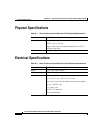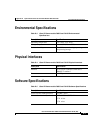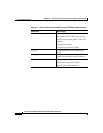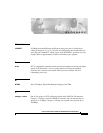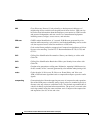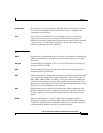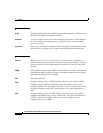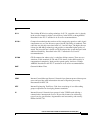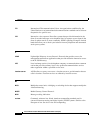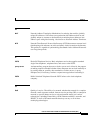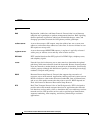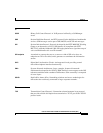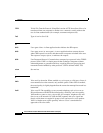
GL-5
Cisco IP Phone Models 7905G and 7912G Administrator Guide (SIP)
OL-4277-01
Glossary
G
G.711
The 64-kbps PCM voice coding technique. In G.711, encoded voice is already
in the correct format for digital voice delivery in the PSTN or through PBXs.
Described in the ITU-T standard in its G-series recommendations.
G.723.1
Compression technique that can be used for compressing speech or audio signal
components at a very low bit rate as part of the H.324 family of standards. This
codec has two bit rates associated with it: 5.3 and 6.3 kbps. The higher bit rate
is based on ML-MLQ technology and provides a somewhat higher quality of
sound. The lower bit rate is based on CELP and provides system designers with
additional flexibility. Described in the ITU-T standard in its G-series
recommendations.
G.729A
CELP compression where voice is coded into 8-kbps streams. There are two
variations of this standard (G.729 and G.729 Annex A) that differ mainly in
computational complexity; both provide speech quality similar to 32-kbps
ADPCM. Described in the ITU-T standard in its G-series recommendations.
GMT
Greenwich Mean Time.
I
ICMP
Internet Control Message Protocol. Network-layer Internet protocol that reports
errors and provides other information relevant to IP packet processing.
Documented in RFC 792.
IETF
Internet Engineering Task Force. Task force consisting of over 80 working
groups responsible for developing Internet standards.
IP
Internet Protocol. Network-layer protocol in the TCP/IP stack offering a
connectionless internetwork service. IP provides features for addressing,
type-of-service specification, fragmentation and reassembly, and security.
Defined in RFC 791.




